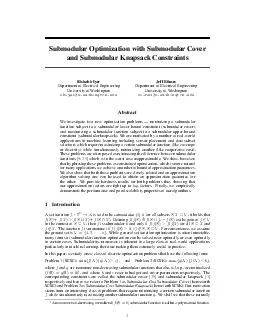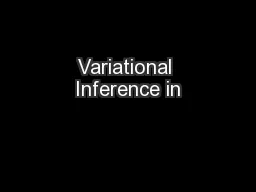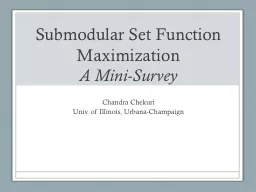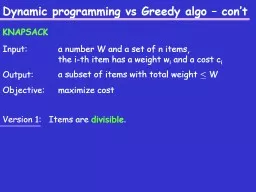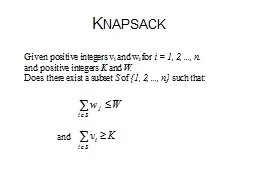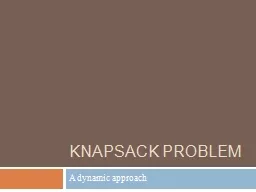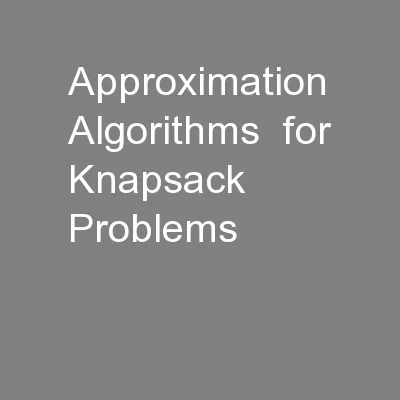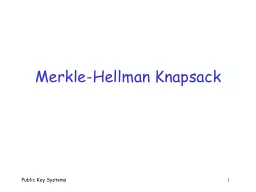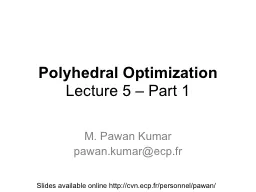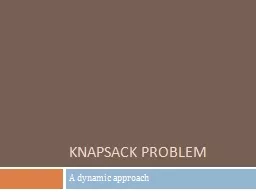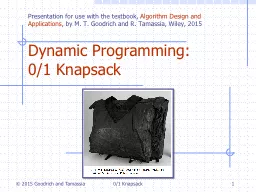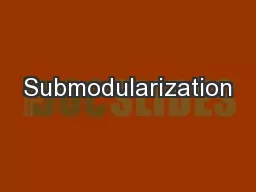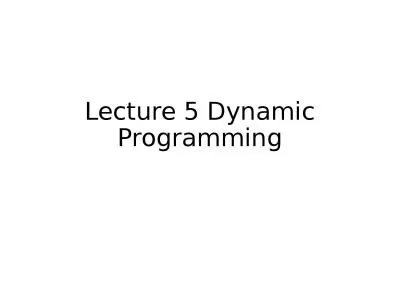PDF-Submodular Optimization with Submodular Cover and Submodular Knapsack Constraints Rishabh
Author : trish-goza | Published Date : 2014-12-27
washingtonedu Jeff Bilmes Department of Electrical Engineering University of Washington bilmesuwashingtonedu Abstract We investigate two new optimization problems
Presentation Embed Code
Download Presentation
Download Presentation The PPT/PDF document "Submodular Optimization with Submodular ..." is the property of its rightful owner. Permission is granted to download and print the materials on this website for personal, non-commercial use only, and to display it on your personal computer provided you do not modify the materials and that you retain all copyright notices contained in the materials. By downloading content from our website, you accept the terms of this agreement.
Submodular Optimization with Submodular Cover and Submodular Knapsack Constraints Rishabh: Transcript
Download Rules Of Document
"Submodular Optimization with Submodular Cover and Submodular Knapsack Constraints Rishabh"The content belongs to its owner. You may download and print it for personal use, without modification, and keep all copyright notices. By downloading, you agree to these terms.
Related Documents

